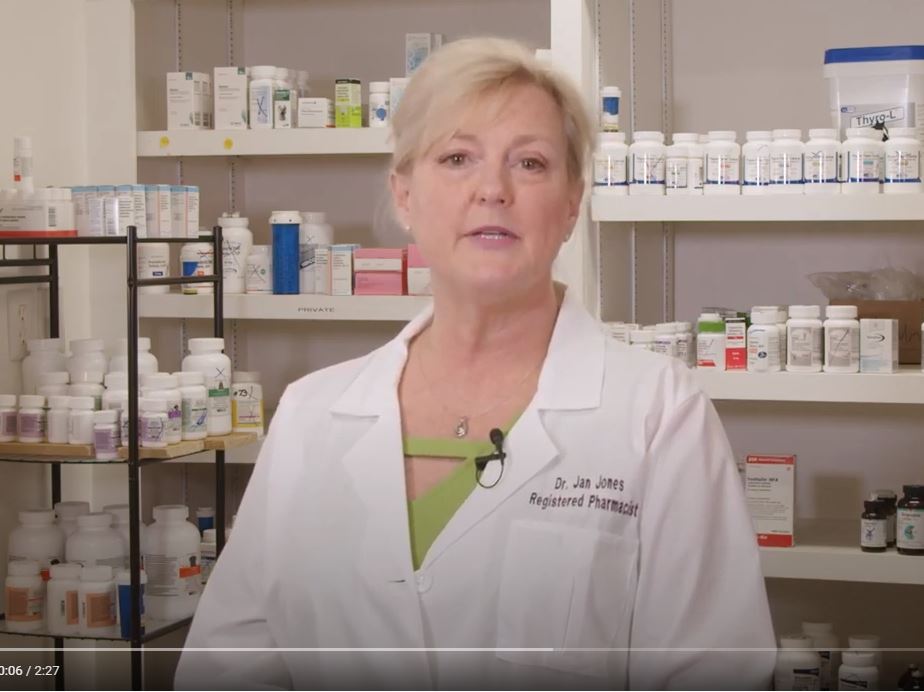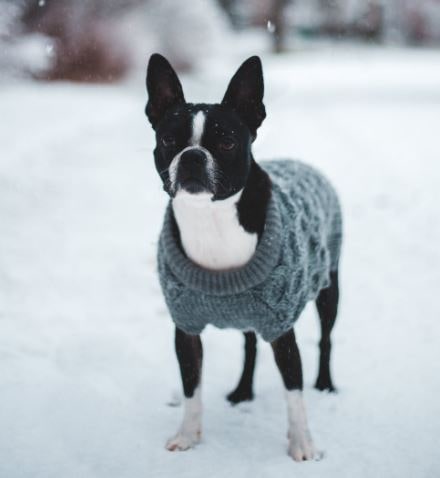As a Veterinarian, I see pets on a daily basis, and I have found that you begin to notice all of the qualities that make each pet unique. Whether it is the color of their eyes, interesting coat markings and colors or just the pet’s confirmation. Even so, it is often a welcome change to see pets come into the clinic dressed for the occasion in coats, hats, sweaters, bowties, or shirts.
Nothing makes a dreary day brighter than seeing a dapper Frenchie in a plaid jacket or a waddling Dachshund in a Fair Isle sweater.
Are these outfits an accessory or a necessity in colder weather?
EVERY ANIMAL IS UNIQUE
Just like humans, pets have a variable tolerance for the elements depending on age, climate, body composition and more. Every dog needs to be considered individually when determining if additional layers are necessary.
Before you dress your pet in cold weather attire, consider these pet characteristics that can make your canine more susceptible to feeling cold:
- Hair: Dogs with short hair and/or thin coats, or thicker hair that’s kept cropped (such as poodles) are more likely to feel the cold.
- Body type: Tiny Chihuahuas and lanky Greyhounds will feel the wind chill thanks to their small statures and thin builds, respectively.
- Age: Older dogs may have weaker immune systems.
- Medical conditions: Pets with Cushing’s disease, diabetes, heart, or kidney disease may have trouble regulating body temperature.
Then consider your dog’s Activity Level:
Experts say Spot’s quick bathroom break and short walks around the block probably do not warrant additional clothing, as movement will help keep him warm. However, make sure you are paying attention to where your pet is putting his paws. Snow and icy water splashing onto a dog’s coat can make him cold quickly.
Dogs that are outside but not consistently active should also wear an extra layer to conserve body heat. Remember: no pet, no matter how hearty, should be outside in sub-zero temps for an extended length of time, period.
WHAT TO WEAR
If your furry friend needs more warmth, follow these general guidelines on selecting the right type of outerwear for your pet:
- Material: A blend of washable wool and cotton or acrylic is insulating and easy to clean. Outdoor experts often recommend a poly-blend and a water-resistant or waterproof jacket if you live in a snowy or wet area. Fleece linings are warm and cozy, too. Be sure to keep coats dry as wet fabric can make pets colder!
- Fit: Measure neck, chest, and neck to waist length to get a fit that is snug but not tight, not easy for the dog to pull off and does not drag on the ground. Knowing your pet’s true weight can help you pick out the right size.
- Additional parts: Beware of zippers, hooks, tags, or buttons that can be chewed off or swallowed.
What about boots?
We have all enjoyed YouTube videos of unsuspecting canines trying to navigate the living room floor with dog booties strapped to their paws. Entertainment value aside, are they necessary? Opinions differ, but some dogs may benefit from the extra protection if they will wear them. Aside from sled dogs running long distances, experts say booties should be used if dogs will be walking on salt (which can be toxic) or have hairy paws that collect snowballs.
If your dog will not wear booties or you cannot find the right fit, paws should be soaked in warm water and dried upon coming inside. Trimming fur between the toes can help keep ice and snow from building up, too.
FELINE FASHION IS A NO-NO
No matter how tempting it may be to clothe a kitten, cats generally should not wear sweaters or jackets. It can put a cat at risk of overheating, injury and general stress, and the cat may put up quite a fuss! Your veterinarian may recommend a sweater for hairless breeds or a covering like a T-shirt for cats that have been shaved for surgery, but those are exceptions. Keeping cats indoors and the temperature reasonable when not at home is enough to ensure their comfort and warmth.
Supervise and Monitor:
Monitoring your pets in winter weather is the most important thing you can do, no matter how much winter gear they have acquired. Supervising pets while outdoors and being on alert for any signs of injuries and illness are vital.
Sweaters, coats, and jackets are essential to humans when the weather turns colder and can be beneficial to our pets as well — with extra cuteness as a bonus. Making informed decisions about outerwear is the best way to keep pets warm, cozy, and safe all season long.
To Your Pet’s Good Health,
Barry Miller DVM
Sources
https:/www./covetrus.com
https://www.petmd.com/dog/seasonal/evr_dg_sweaters_for_dogs
http://www.vetstreet.com/dr-marty-becker/does-your-dog-need-a-winter-coat-or-boots
https://www.avma.org/public/PetCare/Pages/Cold-weather-pet-safety.aspx
https://www.orvis.com/how-to-choose-a-dog-jacket
https://www.petmd.com/cat/seasonal/sweaters-cats-do-they-need-them







